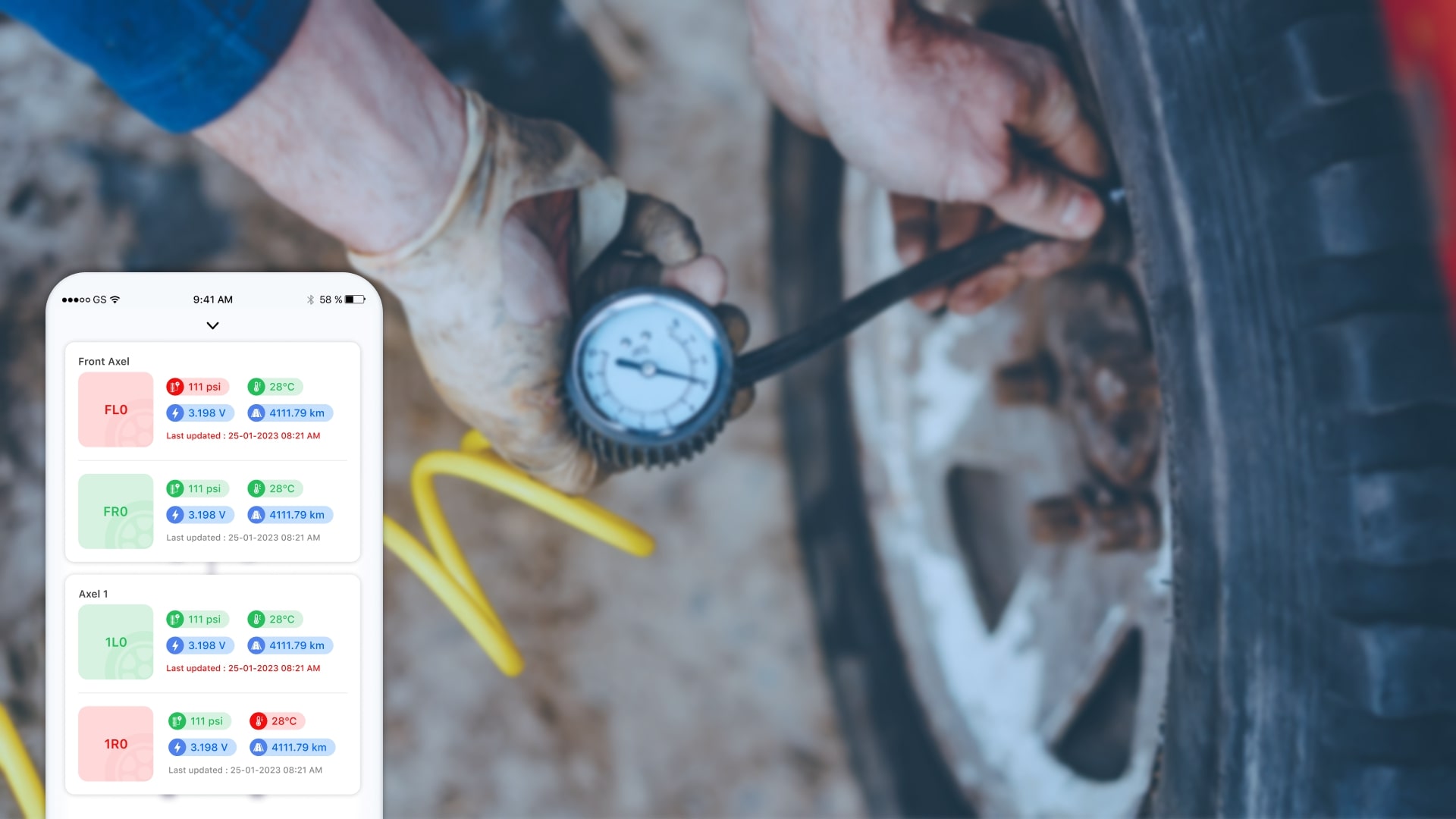Introduction
Maintaining optimal tire pressure is important to ensure safety while driving, and tire pressure monitoring systems (TPMS) can help you achieve that. TPMS is designed to alert drivers when their tire pressure drops below the recommended level and prevent accidents.
In this blog, we will discuss the importance of tire pressure management, how much tire pressure you should maintain, and how TPMS works when it comes to the safety of your fleets. we will also discuss the benefits of tire pressure and temperature monitoring systems and the role of temperature sensor SMS alerts in keeping your car safe.
What is TPMS?
TPMS is a technology that monitors the tire pressure of vehicles in real time. It alerts the driver if the tire pressure drops below a certain level, indicating that the tire needs to be inflated. TPMS is a mandatory feature in many countries, including the United States, and is included in many modern vehicles.
What is the importance of Tire Pressure Management?
Driving with underinflated or overinflated tires can be dangerous as it can affect your fleet handling, stability, and fuel efficiency. It can also lead to tire failure, which can cause significant accidents. Maintaining the recommended tire pressure ensures that your car runs efficiently and reduces the risk of tire failure.
How Much Tire Pressure Should You Maintain?
The recommended pressure is determined by the manufacturer based on the vehicle’s weight, tire size, and load capacity. It is essential to check your tire pressure regularly and maintain it at the recommended level to ensure your car’s safety and performance.
How Does TPMS Work with Tire Temperature Sensors?
Tire pressure monitoring systems use sensors located inside each tire to measure the air pressure. These sensors are connected to a monitoring system that alerts the driver if the tire pressure drops below the recommended level. Our TPMS systems also include tire temperature sensors that measure the tire’s temperature. Tire temperature sensors help identify potential issues that can lead to tire failure, such as overloading or underinflation. By monitoring both tire pressure and temperature, TPMS provides a complete analytics view of your vehicle’s tire health.
Temperature Sensor SMS Alerts
We provide easy-to-understand analytics where Fleet owners can obtain valuable insights into their fleet’s performance, identify trends and patterns of tire pressure & temperature, and make decisions according to data to improve their operations. We also provide Temperature Sensor SMS Alerts, these alerts notify the driver via SMS if the tire temperature exceeds a certain threshold. This feature can be particularly useful in extreme weather conditions, where tire temperature can increase rapidly. Temperature sensor SMS alerts ensure that you are informed of any issues with your fleet’s tire health, even when you are not in your vehicle.
Temperature Monitoring System by TPMS
TPMS system not only provides analytics of tire pressure management data, but It is also useful for other things. TPMS system can be useful to save fuel by maintaining proper tire pressure and temperature. So that fleet owners can save fuel, which is an important part of overall fleet performance. Also, Our TPMS System gives Wireless Monitoring, Temperature Warning Alerts, Pressure Warning Alerts, and Real-time Monitoring, which can help extend the life of your tires by identifying issues early.
Benefits of having TPMS
Improved Safety
The most important benefit of TPMS is improved safety. Properly inflated tires are crucial for safe driving. Underinflated tires can lead to poor handling, reduced traction, and even tire failure. TPMS helps drivers detect underinflation before it becomes a safety hazard. With TPMS, drivers can quickly and easily identify which tire needs attention, reducing the risk of a blowout or other tire-related accident.
Increased Fuel Efficiency
Properly inflated tires can also help increase fuel efficiency. When tires are underinflated, they create more resistance on the road, which can cause the engine to work harder and use more fuel. By maintaining the correct tire pressure, fleets can save money on fuel costs over time.
Extended Tire Life
Properly inflated tires also last longer. Underinflated tires create excessive heat and wear, which can cause them to fail prematurely. By monitoring tire pressure with TPMS, fleets can ensure that their tires are always inflated to the correct level, which can extend tire life and reduce replacement costs.
Reduced Downtime
Tire-related issues are one of the leading causes of vehicle downtime. With TPMS, drivers can catch tire problems early and address them before they become more serious. This can reduce vehicle downtime and keep fleets operating smoothly.
Improved Efficiency
TPMS can be integrated into fleet management software to provide real-time data on tire pressure. Fleet managers can use this data to optimize tire maintenance schedules and ensure that their vehicles are always running at peak efficiency. This can help reduce overall fleet costs and increase profitability.
Compliance with Regulations
As mentioned earlier, many countries require TPMS in vehicles. By using TPMS, fleets can ensure that they are compliant with these regulations and avoid potential fines or other penalties.
Conclusion:
In conclusion, TPMS is a critical technology for fleet management. It provides real-time data on tire pressure, improves safety, increases fuel efficiency, extends tire life, reduces downtime, improves efficiency, and ensures compliance with regulations. By incorporating TPMS into their fleet management software, fleets can save money, reduce risk, and operate more efficiently. If you haven’t already, it’s time to consider integrating TPMS into your fleet management strategy.



